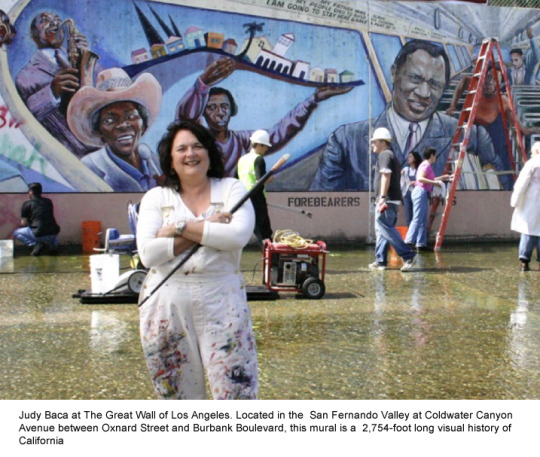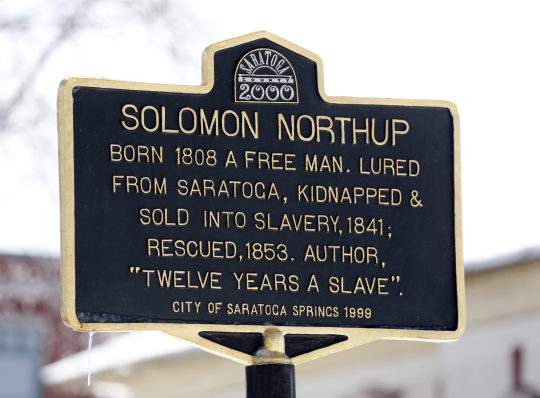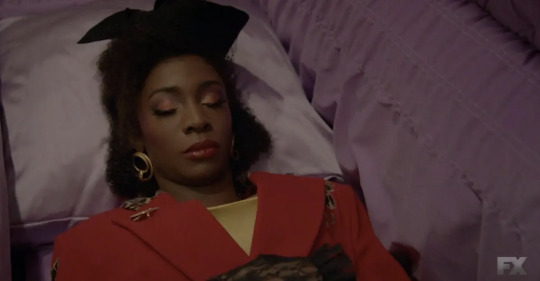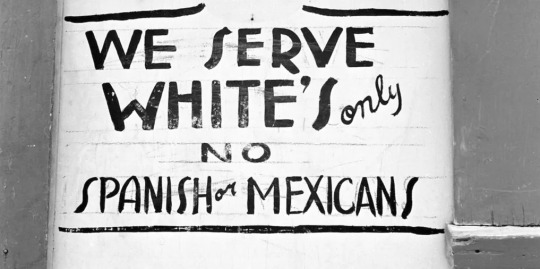Don't wanna be here? Send us removal request.
Text
Multimedia Blog 3 - taylorcassidyj
Taylor Cassidy (@taylorcassidyj on TikTok and Instagram) is a social media content creator and advocate with over 2 million followers on TikTok and over 200K on Instagram. Her content is centered around teaching Black history and spreading Black joy through engaging videos on TikTok, Instagram, and YouTube. She joined TikTok in 2019 where she began a series called “Fast Black History,” 1-minute videos about African American historical figures. Her following quickly grew amassing over 69 million likes on TikTok. Along with the “Fast Black History” series, she created the “Black Girl Magic Minute,” uplifting influential Black creatives. Cassidy has accomplished so much at the age of 20. She is from St. Louis, MO, where I am from! Growing up, we were in the Little Mermaid Musical together which inspired me to write about her. Cassidy is truly an influential figure of our generation and plans to take her advocacy on screen in films/TV.
In Cassidy’s “Black Girl Magic Minute” TikTok series, she celebrates Black creatives. Cassidy started this segment “to not only give credit back to these Black creators, but to uplift them and let people – even people who aren’t Black – discover new creatives and new, amazing people to follow and support” (Novato). In one discussion we focused on Judy Baca, a muralist who uses digital technology to create designs. She uses these designs to create murals in LA whose purpose goes beyond artistic value. They have social influence and are used as a political tool by representing most of the population who are usually voiceless. Cassidy and Baca are similar in giving a voice to the voiceless through different forms of media. Baca bases her art on people and uses digital technology to turn these ideas into reality, while Cassidy uses technology in a different form to convey her message. By uplifting Black creators, their platform can grow, and they can continue to grow doing what they love. Cassidy hopes to make “Black Girl Magic Minute” into a podcast to dive further into the subject.
As mentioned in our readings and discussions, the Harlem Renaissance was an influential moment in history for African Americans. The Harlem Renaissance was centered around Black pride, like Taylor Cassidy’s content. Post emancipation, many Black people in the south became sharecroppers and tenant farmers. In this position, they were in debt to white “landlords” and therefore in “economic bondage” despite being free (Takaki). Because of this, many Black people were eager to leave the south and find work up north. After a mass influx of Black people from the south, a sense of Black pride was formed in Harlem. Known as “the greatest Negro city in the world,” droves of Black people came from everywhere to experience the culture found in Harlem (Takaki). Black educational and economic success spread throughout the community. This is a typical topic Cassidy would create a “Fast Black History” video on. One of her TikTok videos mentions Glady Bentley, an American blues singer, pianist, and entertainer during the Harlem Renaissance. In the video, Cassidy dresses up as Bentley making it entertaining and educational. As mentioned in the video, “it was argued that [Bentley] was a drag king, but it was more that she dressed more masc to get jobs in Harlem night clubs during the Harlem Renaissance” (Taylor Cassidy). Bentley used her intersecting identities to her advantage so she could showcase her talents. The Harlem Renaissance was an opportunity for African Americans to express and create, similar to Cassidy’s social media content creation.



youtube
Works Cited
“Best of Fast Black History TikToks (Black Music, Pop Culture, and More!) | Taylor Cassidy.” YouTube, uploaded by Taylor Cassidy, 26 March 2021, https://youtu.be/1OZcOMwk5B0.
“Black Girl Magic Minute | Official Trailer | Taylor Cassidy.” YouTube, uploaded by Taylor Cassidy, 24 April 2021, https://youtube.com/shorts/YX9Vkp8dlh8?feature=share.
Campano, Leah. “Taylor Cassidy Makes Black History Accessible to Millions with a Viral TikTok Series.” Seventeen, 27 Feb. 2023, www.seventeen.com/life/a43050504/taylor-cassidy-voices-of-change/.
“Judy Baca.” California State University, Northridge, 15 Oct. 2015, www.csun.edu/mike-curb-arts-media-communication/judy-baca.
Novato, Olivia. “Taylor Cassidy: The Educator on Teaching Black History, 'Black Girl Magic Minute', and More.” Taylor Cassidy | The Educator on Teaching Black History, 'Black Girl Magic Minute', and More., flaunt.com/blog/taylor-cassidy.
Staff, Teen Vogue. “Teen Vogue's 21 Under 21 2021: The Young People Shaping Tomorrow.” Teen Vogue, Teen Vogue, 14 Dec. 2021, www.teenvogue.com/gallery/teen-vogues-21-under-21-2021.
Takaki, Ronald T., 1939-2009. A Different Mirror : a History of Multicultural America. Boston :Little, Brown & Co., 1993.
Taylor Cassidy [@taylorcassidyj]. “learn more about Gladys Bentley in my bio!” TikTok, 27 July 2022, https://www.tiktok.com/@taylorcassidyj/video/7125167391683743022?is_from_webapp=1&sender_device=pc&web_id=7156437192771192366.
@tamarakjohnston
0 notes
Text
Multimedia Blog 2 - 12 Years a Slave
12 Years a Slave is a biographical drama film released in 2013 and directed by Steve McQueen. The film is based on the true story of Solomon Northup as described in his 1853 memoir 12 Years a Slave. Northup, a free Black man, was kidnapped and sold into slavery in the 1840s. The film depicts his experiences as a slave in Louisiana as he suffered malicious acts of violence, exploitation, and dehumanization. The critically acclaimed film is a powerful examination of the horrors of American slavery. It’s an accurate on-screen portrayal created to educate Americans about slavery in the deep south before the Civil War. The film presents Northup’s documented experiences for a mass audience to view and to comprehend.
12 Years a Slave generated a significant conversation regarding race, ethnicity, and cultural diversity. The film depicts the brutal realities of slavery in the United States and highlights the dehumanization of African Americans during the time. It raises important questions about the persistence of racism and systemic oppression as society evolved. With characters of different ethnic and cultural backgrounds, the film sheds light on the diversity of experiences and perspectives within the African American community. Nicholas Mirzoeff describes a photograph as “a screen upon which wider social forces become visible” (Mirzoeff 111). Following the abolition of slavery in 1863, media consumption through photos, fairs, sideshows, and cinemas increased, and indexicality was used to display racial differences. As mass media consumption is even greater today, photography and cinematography, like in 12 Years a Slave, can be used as a reminder of the past and a method to change the outlook on race. The film is a powerful expression of the need to confront the legacy of slavery and racism so we can work towards a more fair and just society.
Before Solomon Northup’s enslavement, he was a farmer, a skilled carpenter, a reputable violinist, and a landowner. He lived with his family in Saratoga Springs, New York and was considered part of the middle class within the Black community. He was able to navigate both Black and white society, making connections with various types of people. In Dom Apollon’s “Don’t Call Them ‘Post-Racial.’ Millennials Say Race Matters to Them,” socioeconomic class is mentioned in relation to race. Some participants the focus groups believed “class is a more important factor than race in predicting individual and/or group outcomes in society” (Apollon). Having more money sets you up for success with greater access to quality healthcare, better schools, improved home-life, and job opportunities. While class has an important role in an individual’s societal outcome, race still plays a major part. Northup lived a comfortable life with multiple jobs and land, but his socioeconomic status didn’t prevent him from being racially targeted and kidnapped into slavery. The same is true in modern day; Black people may have more wealth than ever, but all too often are they are racially profiled leading to violence and marginalization. Despite being racially targeted, Northup’s socioeconomic class played a significant role in his time of enslavement. He was given opportunities because he had more knowledge and skills than other slaves and was eventually freed because of his affluent connections in the North.
youtube



Works Cited
“12 YEARS A SLAVE Featurette: “A Portrait of Solomon Northup.” YouTube, uploaded by SearchlightPictures, 4 September 2013, https://youtu.be/hUHFWp-1Veo
Apollon, Dom. “Don't Call Them ‘Post-Racial." Millennials Say Race Matters to Them.” Colorlines, 7 June 2011, colorlines.com/article/dont-call-them-post-racial-millennials-say-race-matters-them/.
Bruenig, Matt. “Wealth Inequality across Class and Race in 5 Graphs.” People's Policy Project, 5 Mar. 2019, www.peoplespolicyproject.org/2019/03/05/wealth-inequality-across-class-and-race-in-5-graphs/.
Mirzoeff, Nicolas (2003). The Shadow and the Substance: Photography and Indexicality in
American Photography. In: Only Skin Deep: Changing Visions of the American Self. Ed. by Coco Fusco and Brian Wallis. New York: International Center for Photography / Harry N. Abrams, 111–128.
Patrick Young, Esq. “The Immigrant Story behind Twelve Years a Slave.” Long Island Wins, 19 Aug. 2016, longislandwins.com/news/national/the-immigrant-story-behind-twelve-years-a-slave/.
Press, Associated. “Death of Solomon Northup, Author of 12 Years a Slave, Still a Mystery.” The National, The National, 19 June 2021, www.thenationalnews.com/lifestyle/death-of-solomon-northup-author-of-12-years-a-slave-still-a-mystery-1.277249.
@tamarakjohnston
0 notes
Text
Multimedia Blog 1 - Pose
The subject of Pose, a TV show created by Ryan Murphy, is centered around the ballroom culture in New York City during the late 1980s and early 1990s. Pose explores the experiences of Black and Latinx queer and trans people who, during the time, were marginalized in mainstream society and used the ballroom community as refuge. The intersection of race, sexuality, and gender identity are displayed through the experiences of the characters and show how these elements shape their lives.
In the second season of the show, one of the main characters, Candy, died after being attacked by one of her clients. After starting her own house in the second season, she struggled to financially support her house members and became a sex worker to get by. She worked in a motel, and one night was killed. Her death was not investigated by police due to the stigma surrounding transgender people at the time. In the episode, there is an open casket funeral for Candy, similar to Emmett Till’s funeral. According to Sturken and Cartwright, the photo of Emmett Till was integral to the rise of the Civil Rights movement in the United States because it showcased the “gruesome evidence of violence exacted upon” him (Sturken 11). The photo showed the severity of Black oppression at the time and the extent of violence inflicted on a 14-year-old boy because of Jim Crow segregation laws. If a boy of Emmett Till’s age could be lynched so brutally for supposedly whistling at a white woman, imagine the instances of violence not revealed by photo. Although Candy’s injuries were not as apparent as Till’s, the impact is similar. In the casket, Till was unrecognizable as human, while Candy was beautified, but both cases moved viewers. At the end of the episode, a shocking fact is displayed onscreen: “more than 1,000 trans and gender-nonconforming people have been murdered globally since 2016.” Candy’s death is a reminder of the violence inflicted upon LBGTQ people of color and the daily challenges they face.
In the first season of Pose, Blanca, an Afro-Latina transgender woman, and Lulu, a transgender woman of color, are refused service at a gay bar. When Blanca later tries to go alone, the bouncer told her there’s a “members only” policy at the bar but proceeds to let a group of white gay men into the bar without proof of membership. Blanca realizes she is being discriminated against based on her race and gender identity. She attempted to stand up for her rights but was unsuccessful. The scene highlights the discrimination that LGBTQ people of color faced in the 1980s even within their own community. The exclusion in Pose is like the conditions Mexicans encountered in the early 1900s. Mexican laborers attempted to obtain residence in the U.S. in search of higher paying jobs. Once across the border, Mexicans were limited to manual labor because white labor unions protected the skilled jobs, forming a racial divide in the workforce. They “were excluded from Anglo society,” which included public buildings, Anglo businesses, schools, etc. (Takaki 780). Public buildings were considered “Anglo territory” where Mexicans were only allowed to shop on Saturdays (Takaki 780). When attempting to eat at a restaurant in Amarillo, Texas in the 1920s, Mexicans were told to sit in the section “For Colored People.” Mexicans also had to “retreat to their barrios” at the end of the day, away from Anglos (Takaki 780). Like Mexicans in the early 1900s were segregated and forced to stay within their community, Blanca and Prey Tell were forced to stay within the ballroom community despite efforts to branch out.
Discrimination based on race and ethnicity has been prevalent in the U.S. throughout the 20th century and is a heightened concern for LGBTQ people of color today. They face discrimination when seeking access to health care, employment opportunities, housing, and legal protections, and are more susceptible to hate crimes, police brutality, and domestic violence. Their intersecting identities and the presence of systemic racism, homophobia, and transphobia lead to a continuous cycle of marginalization.


youtube

Works Cited
“Access.” Pose, created by Ryan Murphy, season 1, episode 2, FX Productions, 2018.
Gamboa, Suzanne. “Texas Immigration Law Clouded by State's History of Racial Discrimination.” NBCNews.com, NBCUniversal News Group, 3 June 2017, www.nbcnews.com/news/latino/history-racism-against-mexican-americans-clouds-texas-immigration-law-n766956.
“Never Knew Love Like This Before.” Pose, created by Ryan Murphy, season 2, episode 4, FX Productions, 2019.
“Pose 1x02 Bar Scene.” YouTube, uploaded by Colly Kachigian, 16 March 2019, Pose 1x02 Bar Scene
Sturken, Marita, and Lisa Cartwright. Practices of Looking. 3rd ed., Oxford University Press, 2018.
Takaki, Ronald T. A Different Mirror. Little, Brown & Company, 2008.
2 notes
·
View notes